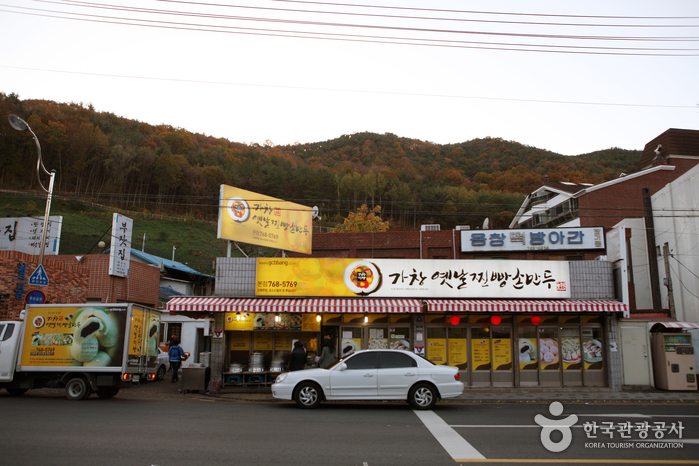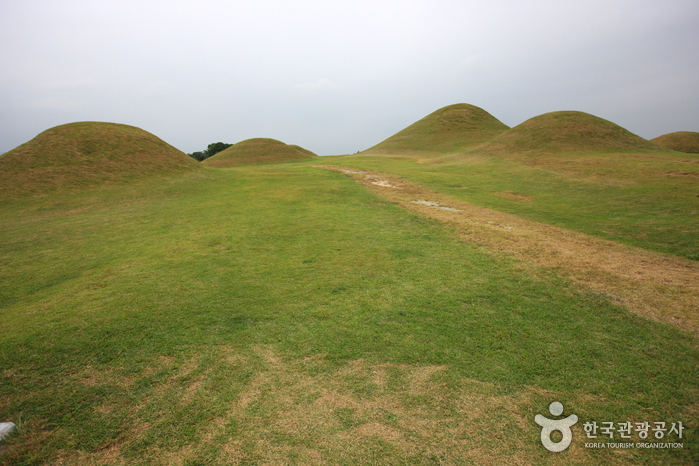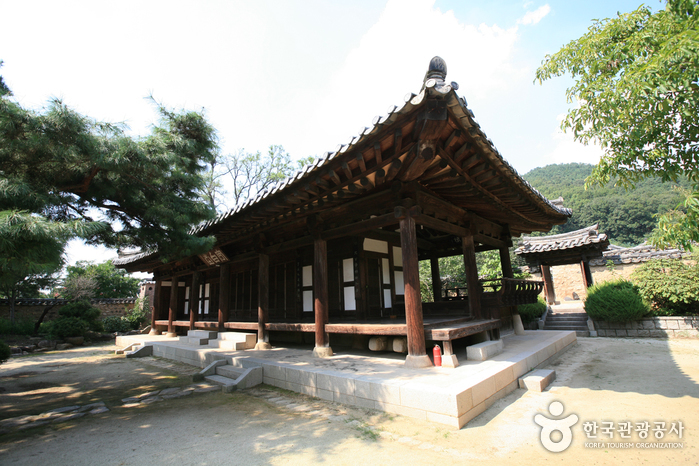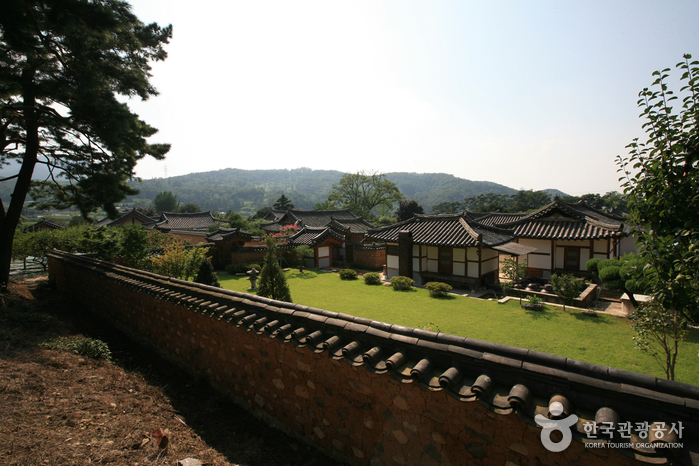Yongyeonsa Temple (Daegu) (용연사(대구))
14.8Km 42255 2024-02-15
260 Yongyeonsa-gil, Okpo-eup, Dalseong-gun, Daegu
The name Yongyeonsa has its roots in a legend: a dragon is said to have ascended from the pond at the temple's entrance, leading to the name Yongyeon ("yong" means "dragon" and "yeon" means "pond" in Korean). This temple is renowned as one of the sites that enshrine the Buddha's sarira (relics). Inside Yongyeonsa, the ordination platform holds special significance as the resting place of the Buddha's sarira, where rituals are conducted. This symbolizes the enduring presence of the Buddha. The approach to Yongyeonsa Temple is through a forest-rich path, offering an experience akin to a forest bathing. This path also doubles as a hiking trail leading up to Biseulsan Mountain.
Daegu National Science Museum (국립대구과학관)
15.9Km 5602 2023-01-05
20, Techno-daero 6-gil, Dalseong-gun, Daegu
+82-53-670-6114
At Daegu National Science Museum, children can explore the world of science while they play and participate in diverse hands-on activities. Various science programs provide opportunities for children to use their imagination and creativity as they engage in learning.
Park Jiyun's Gachang Jinbang (박지연의 가창옛날찐빵본점)
16.4Km 10040 2024-02-27
1099 Gachang-ro, Gachang-myeon, Dalseong-gun, Daegu
053-768-5768
Gachang Original Bread, a renowned steamed bun bakery in Daegu, is celebrated for its jjinppang (steamed buns), a beloved traditional snack in Korea. This shop's success inspired the opening of other establishments selling steamed buns and dumplings in the area, eventually leading to the creation of Gachang Jjinppang Street. Since its opening in 2000, the bakery has committed to selling only buns made on the same day, meticulously kneaded and rolled by hand. Their flagship products, jjinppang and handmade mandu, have gained such popularity that they often attract long lines of customers.
Ancient Tombs in Gyo-dong and Songhyeon-dong, Changnyeong (창녕 교동과 송현동 고분군)
17.1Km 23062 2023-06-27
34, Changmil-ro, Changnyeong-gun, Gyeongsangnam-do
+82-55-530-1471
Songhyeon-dong Ancient Tombs, located under Mokmasanseong Fortress at the west foot of Hwawangsan Mountain, are large ancient tombs located in the southwest by the road leading to Hyeonpung. The Gyo-dong Ancient Tombs are dozens of ancient tombs that were once gathered around a large royal tomb, which among only eight tombs with damaged mounds now remain. Some of these ancient tombs were excavated by the Japanese between 1918 and 1919, and most of the relics were moved to Japan, and only some of them remain in Korea. According to the results of the investigation at the time, the large tombs were either built in a passageway form or an entry gate form.
It is said that a large number of relics such as jewelry made of various precious metals, including gold crowns, pure gold transplants, and copper, iron armour, and earthenware were excavated. The excavation report left by the Japanese is simple, so it is not possible to accurately grasp the structure of the Gyo-dong Ancient Tombs and the excavated relics. Twenty-one of the existing tombs have been restored so far, and only one of them has an accessible entrance.
The tombs in Songhyeon-dong are largely divided into two areas. Area 1 used to be large tombs with 80 tombs west of the foot of Mokmasan Mountain, but now only about 16 tombs remain. It is said that there were about 20 tombs in the second area near the stone Buddha in Songhyeon-dong, but now most of them have turned into rice paddies, and only a few tombs reveal their original appearance. Since the tombs are close to the Gyo-dong tombs, the structure of the tomb and the nature of the relics are believed to be almost the same. Along with the Gyo-dong tombs, a large number of relics were excavated in 1918, but the whereabouts of some of the relics are unknown.
Wonjo Hyeonpung Park Soseon Halmaejip Gomtang (원조현풍박소선할매집곰탕)
17.8Km 44884 2024-02-27
56-1 Hyeonpungjungang-ro, Hyeonpung-eup, Dalseong-gun, Daegu
Established in the 1950s as a rural restaurant specializing in doenjang jjigae (soybean paste jjigae), Wonjo Hyeonpung Park Soseon Halmaejip Gomtang gained popularity when the gomtang (beef bone soup), boiled on special occasions, became a signature dish. Ms. Park Soseon started the restaurant under the name "Halmaejip" and has continued the tradition for three generations. Renowned as one of the top three gomtang restaurants in the country, alongside establishments in Haeju and Naju, it proudly represents Daegu and Gyeongbuk. Known for its clear broth and the harmonious combination of various cuts of meat, it has earned a well-deserved reputation for its delicious gomtang.
161 Coffee Studio (161스튜디오)
17.8Km 0 2024-02-15
581, Biseul-ro, Hyeonpung-eup, Dalseong-gun, Daegu
161 Coffee Studio is a spacious bakery café, complete with a terrace and an outdoor grassy yard. It's particularly popular for being kid-friendly, offering various facilities and games for children. In the fall, the café becomes especially picturesque as the yard is adorned with lush pink muhly grass, earning it the nickname "the pink muhly café." The café's menu includes a range of drinks and desserts, with the Salt Coffee (salt cream einspänner) standing out as its signature beverage. Inside, the café's large picture windows provide a panoramic view of the surrounding fields, adding to the overall ambiance.
ER Donga - Suseong Branch [Tax Refund Shop] (ER 동아 수성)
18.4Km 0 2024-04-23
191, Jibeom-ro, Suseong-gu, Daegu
-
Village of the Nampyeong Mun Clan in Bon-ri (남평문씨본리세거지)
18.6Km 20572 2021-03-16
16, Inheung 3-gil, Dalseong-gun, Daegu
+82-53-668-3162
The Village of the Nampyeong Mun Clan in Bon-ri was built on what used to be part of a temple, but was organized following a well-field system to make the area a residence for many generations. As of now, nine houses and two pavilions remain, as well as a low wall along the road.
The main building of the village is Subongjeongsa, located in the center of the area. It was used for meeting guests, as well as a gathering place for the family, and features beautiful gardens. Gwanggeodang Hall was an educational place for studies and refinement. Insumungo Storage Building preserves about 10,000 books and clan treasures. It started out as a small building but later was expanded, including an additional building constructed just to read books.
Inheung Village (인흥마을)
18.7Km 16618 2020-04-14
16, Inheung 3-gil, Dalseong-gun, Daegu
+82-53-668-3162
The descendants of Mun Ik-jeom, who are known to have
brought the Nampyeong Mun clan to prosperity, reportedly came to Daegu about 500 years ago. It was during the time of Mun Gyeong-ho (1812-1874), the 18th descendant of Mun Ik-jeom, that the clan became established in Inheung. Mun executed his plan to create a village for the clan by putting down roots in the old site of Inheungsa Temple, a large-scale temple in the Goryeo era.
Yonghojae, which is a place for offering ancestral memorial services, is the first building established at the village constructed before or after 1920. The first residential building was built around the late 1800s in the form of thatched cottage. During the course of a hundred years, the village developed into what it is today. Featuring about 70 or so tile-roofed homes, Inheung Village is only about 200 years old but it is a great example of traditional residential homes of the em>yangban upper class in the Yeongnam region. The harmony between the way the village is organized and the surrounding landscape is unique and rare.
Asadara (아사다라)
18.8Km 35819 2024-02-28
116-2 Yonghak-ro, Suseong-gu, Daegu
Asadara is a Korean beef restaurant, set amidst a beautifully landscaped pine tree garden. At the meat corner, customers choose their meat and pay for it separately, plus an extra service charge for the meal. The restaurant's highlight is hanu sutbulgui (charcoal-grilled Korean beef), offering a dining experience akin to a Korean table d'hote. Beyond this, Asadara also offers an array of dishes, including jeonbok galbitang (abalone and galbi soup), yukhoe (beef tartare), and a bulgogi set menu. The name "Asadara" is inspired by Asadal, the ancient capital of Gojoseon, which dates back 5,000 years.



![ER Donga - Suseong Branch [Tax Refund Shop] (ER 동아 수성)](http://tong.visitkorea.or.kr/cms/resource/46/2884146_image2_1.jpg)


 English
English
 한국어
한국어 日本語
日本語 中文(简体)
中文(简体) Deutsch
Deutsch Français
Français Español
Español Русский
Русский